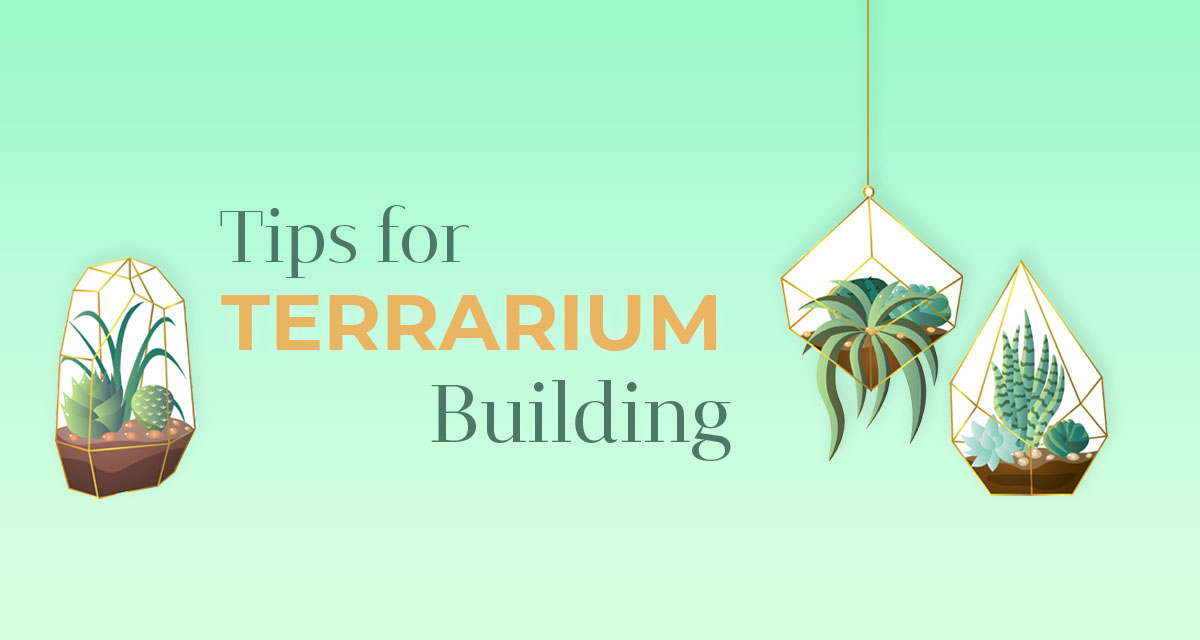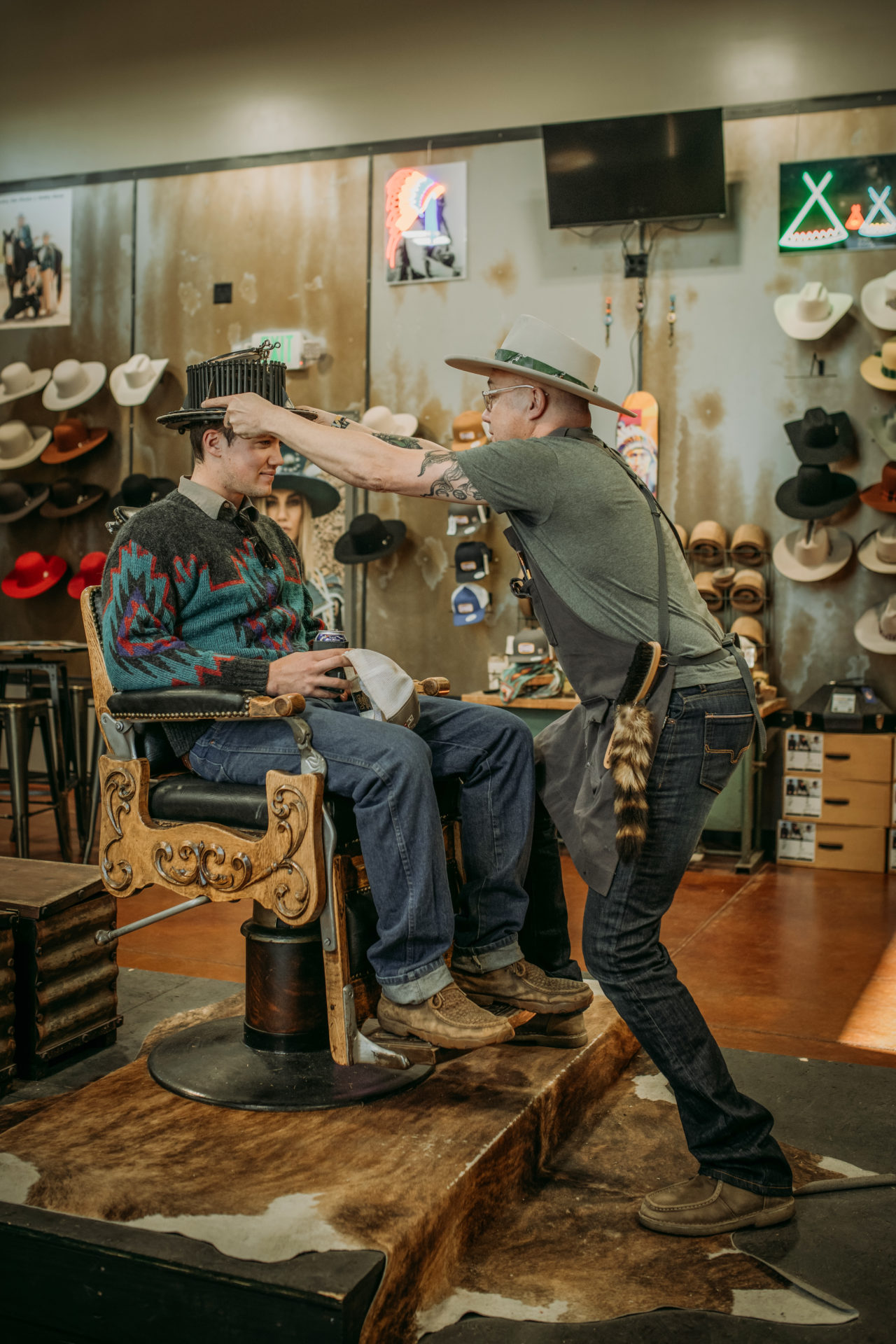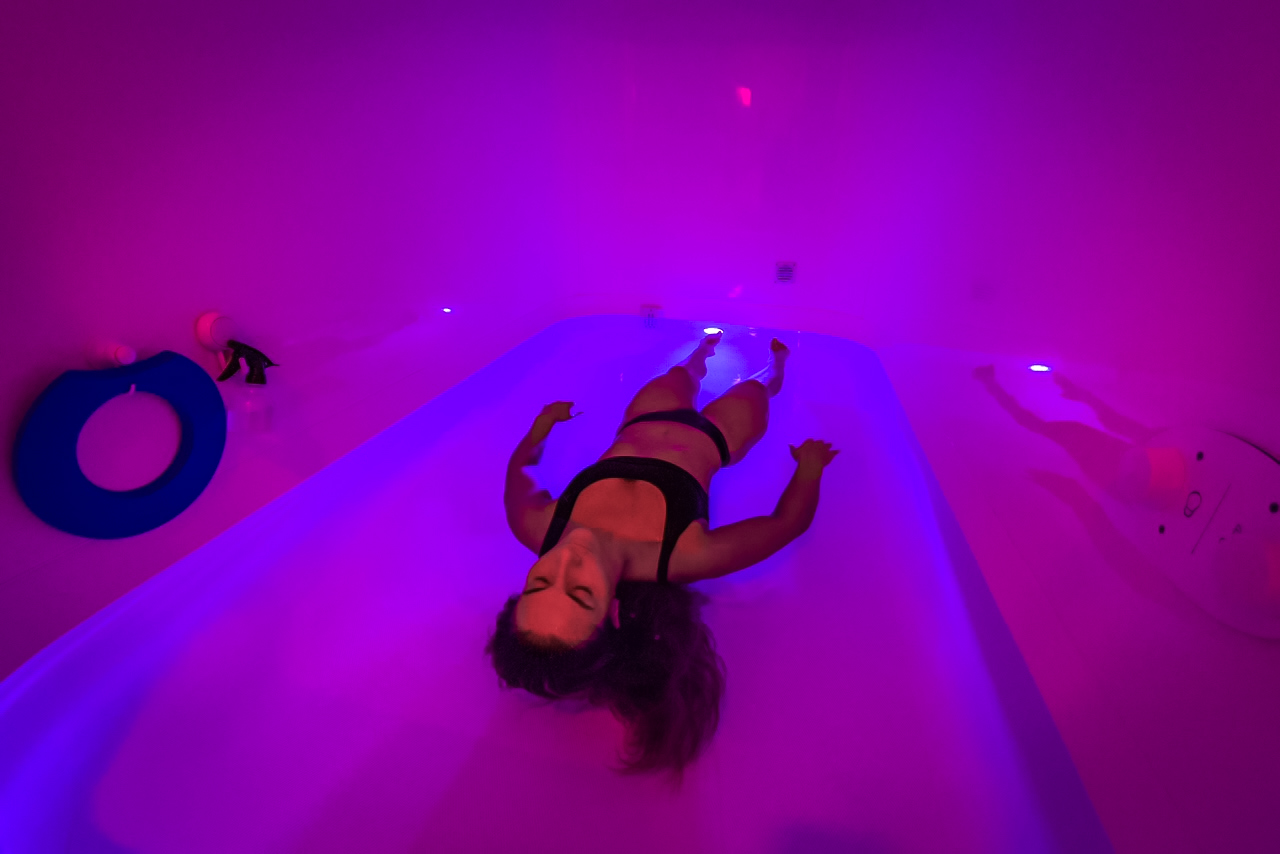Humans have been caring for little plants in glass jars for hundreds of years. These intricate enclosures, called terrariums, date back to the 1800s in Europe when travelers discovered they could bring exotic plants back from the tropics. Terrariums evolved to include complex ecosystems—even ones that house other living creatures such as snakes, frogs and spiders.
The basics of terrarium making are quite simple, says Kelcie Glick, local terrarium hobbyist and vivarium (think indoor animal, insect or reptile habitat) maker, and you can start one of two ways: “One is to start with a plant and figure out what it needs to be happy, and the other is to start with an interesting container. If you pick your glassware first, you just have to select the right plants to fit in what you’ve got.”
Terrarium glassware comes in all kinds of shapes and sizes: Some are tall and skinny and others are short and stout. Taller jars trap in more moisture, making them ideal for nerve plants, calatheas and other plants that need lots of humidity. Shallow bowls with wider openings are great for succulents and cacti. Some enclosures have a lid or cork that seals them shut, allowing plants that like to stay moist, like ferns and moss, to create their own self-sustaining ecosystem.
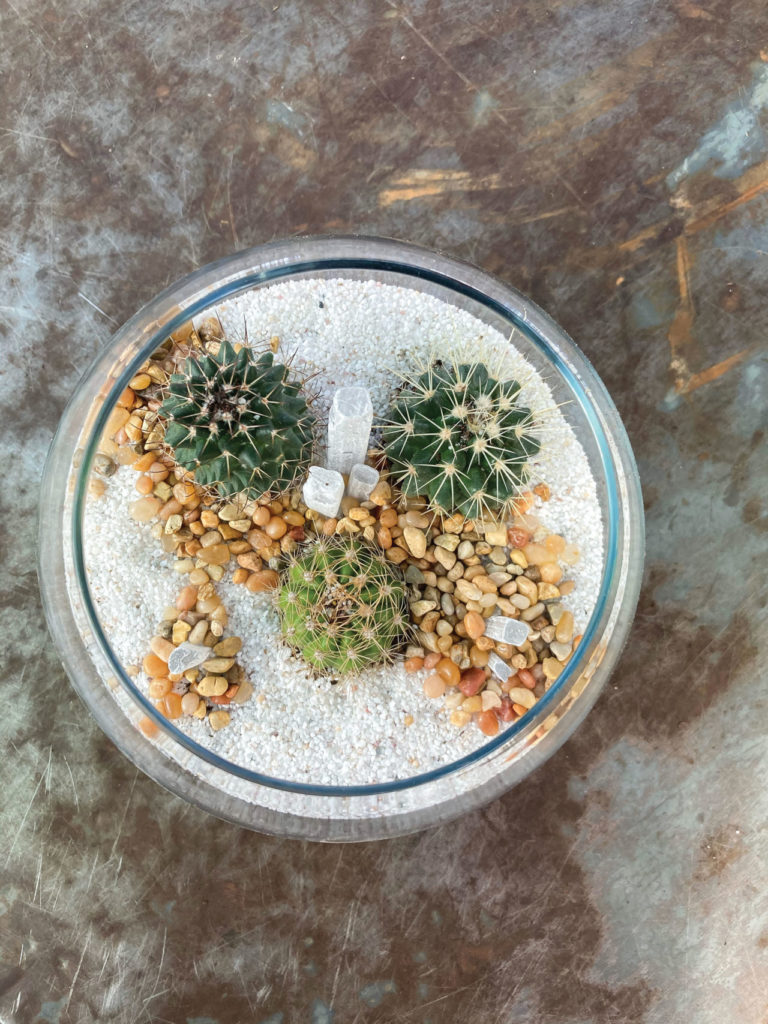
Cactus terrarium by Eri Matsumura at Fort Collins Nursery.
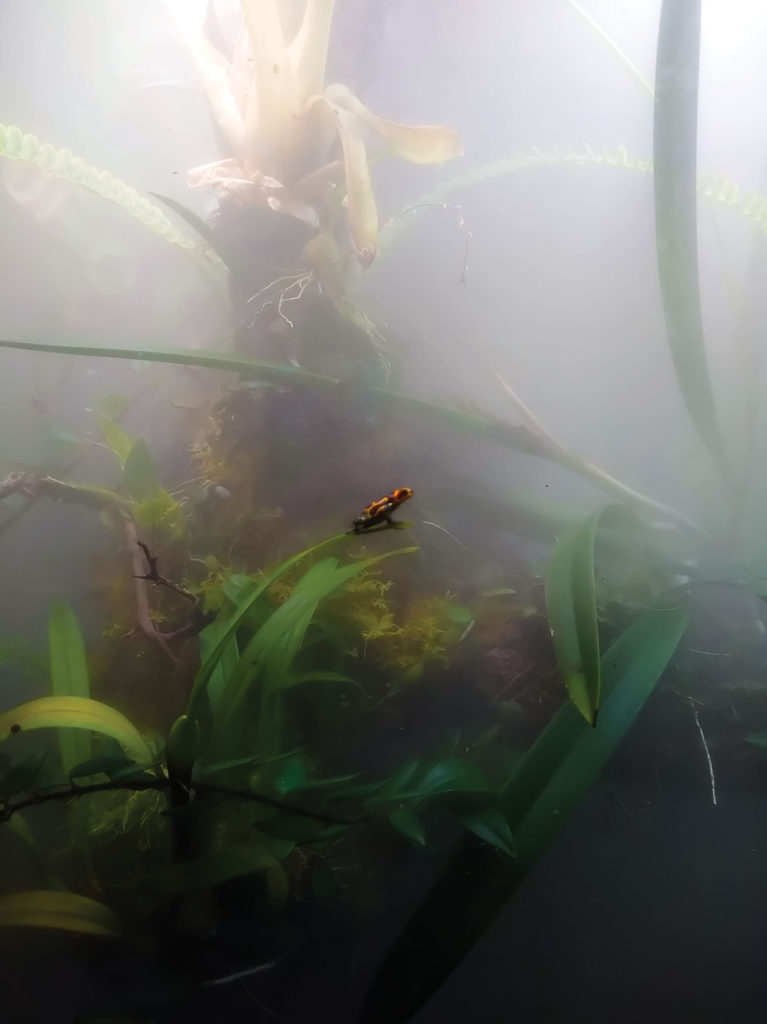
Kelcie Glick’s tree frog vivarium.
Before building a terrarium, it’s important to pick plants that have the same water and light needs as one another, says Kelly Kellow, horticulturist at The Gardens on Spring Creek. Terrariums typically house small, compact plants that need medium to bright indirect light (usually in a room with a south- or west-facing window), and most prefer evenly moist soil. Succulents and cacti require more light and less water, so they can’t live in a terrarium with other types of plants.
“Each kind of terrarium brings something different to your space,” says Kellow. “Succulent and cacti terrariums tend to be pretty small, so they can sit on your windowsill or hang from the ceiling in a little globe. Terrariums with tropical plants can be anything you want them to be. I like to choose plants that contrast with each other in terms of height, color, texture and growth habit to make it more interesting.”
There’s more to terrariums than the plants and what you put them in. In many ways, it’s an art form that requires specific tools, materials, techniques and, most importantly, an eye for design. For basic terrariums, you’ll need potting tools, soil and horticultural charcoal. Decorating is up to you, but many use colored pebbles, sand, seashells, gemstones and miniature figurines.
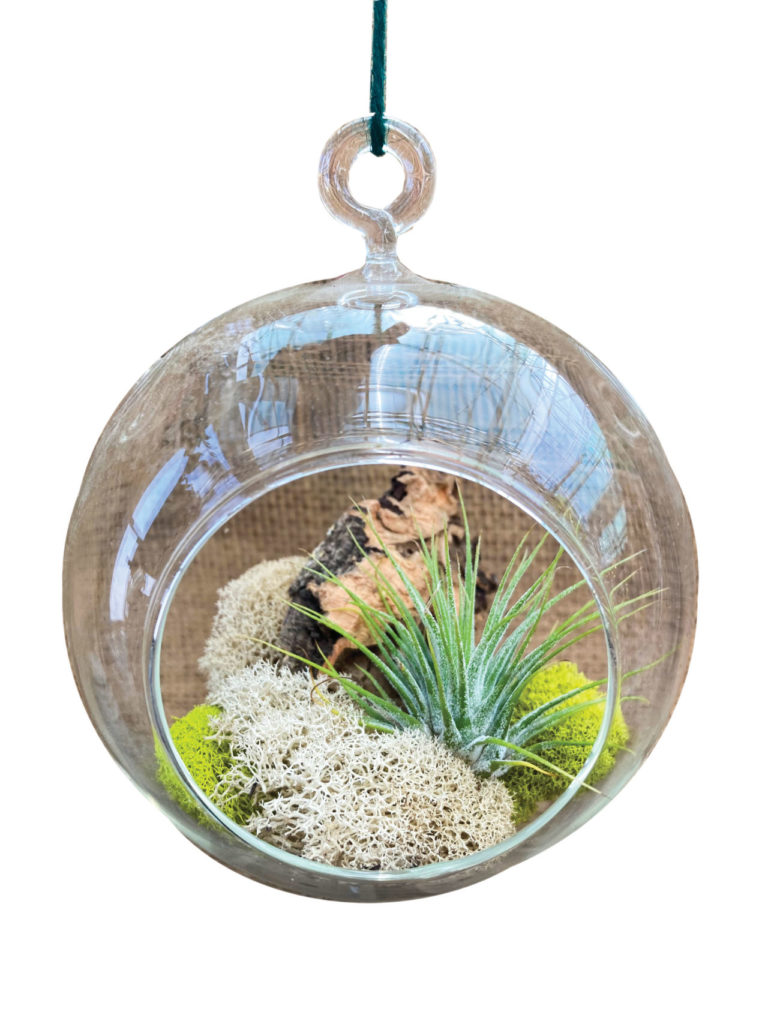
Airplant terrarium by Eri Matsumura.
Once you have all your supplies, it’s time to start building. Pour a half-inch to an inch-thick layer of horticultural charcoal into the bottom of your glass (depending on how big it is) and add a few inches of potting soil on top. All-purpose potting soil works well for foliage plants, but cacti and succulents will want a well-draining mix with more perlite and sand. Once the base of your terrarium is constructed, remove your plants from their pots and gently loosen their roots, using your terrarium tools to tuck them in where you want them.
Eri Matsumura, assistant greenhouse manager at Fort Collins Nursery, says terrarium plants look best in odd numbers and arrangements: “Stick with three plants, or maybe five if you have a large terrarium, and try to use up the space in thirds. Vertically, you want your bottom third to be the soil medium, the middle third to be your plants and the top third to be empty space. That makes it more visually appealing and gives your plants room to grow.”
The final layer is your decor. Terrarium artists usually top them off with a thin layer of rock and add other design elements that suit their taste. Kellow likes to add seashells she finds on trips to the ocean, while Glick hides small dragon figurines among her real-life dart frogs and decorates with natural elements like wood. For Matsumura, it’s about composition, proportions and contrasting different colors and textures within one theme, such as a desert landscape or a gnome’s hideaway.
When you’re happy with your design, carefully water the plants, watching the soil turn dark to gauge how much is needed, then place your terrarium on a shelf to admire it from afar. Though they are fairly low maintenance, you’ll still need to water your terrarium on occasion (check the soil color first), prune back or repot overgrown plants and remove any dead leaves so they don’t rot and create mold.
“Terrariums can be easy to forget about, but it’s also tempting to water them too often because they dry out slower than regular potted plants,” Kellow says. “Either way, mistakes happen and just because you might have killed a plant or two doesn’t mean you have a black thumb. Try something different and don’t give up because it really does come down to trial and error. And most importantly, let loose and have fun with it.”
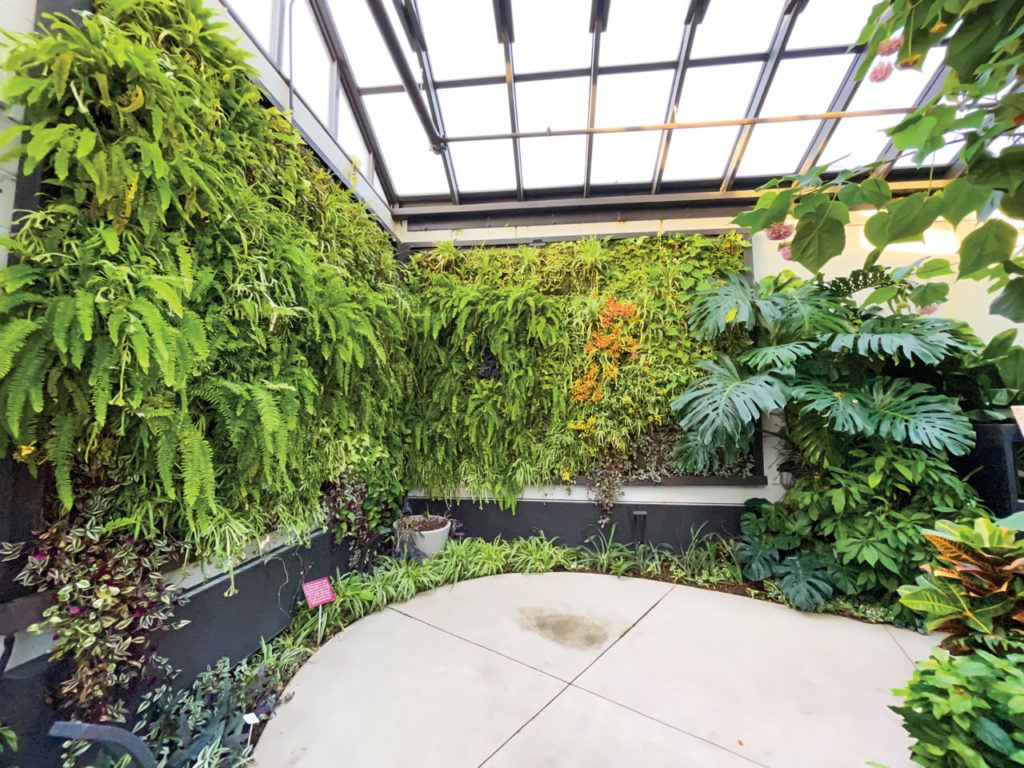
Butterfly House at the Gardens on Spring Creek.
BUILD YOUR OWN
Local Recourses
Horsetooth Stem and Roots’ DIY terrarium bar (This new shop opened the end of February and people can visit anytime. No classes needed and instruction is provided when you build.) Tipsy Terrarium & Sippin’ Succulents Classes with The OBC Wine Project this spring: March 10, March 24, April 7.
Apothecary Jar Terrarium classes at Gulley Greenhouse with instructor Rebekah Paulson are provided once or twice a month. Private classes are also available upon request. Her next class will be held 10 a.m. on March 12. The class is $70 per person and is open to all ages.
Terrarium Building Class at Fossil Creek Nursery on April 16 at 5:15 p.m.
Windsor Gardener will be doing a DIY Terrarium class Saturday March 12, at 10am, it is $70/person and is open to all ages.
BOOKS
• Terrariums: Gardens Under Glass by Maria Colletti – Recommended by Kellow
• The New Terrarium: Creating Beautiful Displays for Plants and Nature by Tovah Martin – Recommended by Kellow
• Miniature Terrariums: Tiny Glass Container Gardens Using Easy-to-Grow Plants and Inexpensive Glassware by Fourwords
• A Beginner’s Guide to Terrarium Gardening: Succulents, Air Plants, Cacti, Moss and More! by Sueko Katsuji, Motoko Suzuki, Kazuto Kihara and Yuya Ohyama
INSTRUCTIONAL VIDEOS:
• SerpaDesign (Tanner Serpa) on YouTube
• Inspiration on Instagram: @terrarium.imaginarium,


